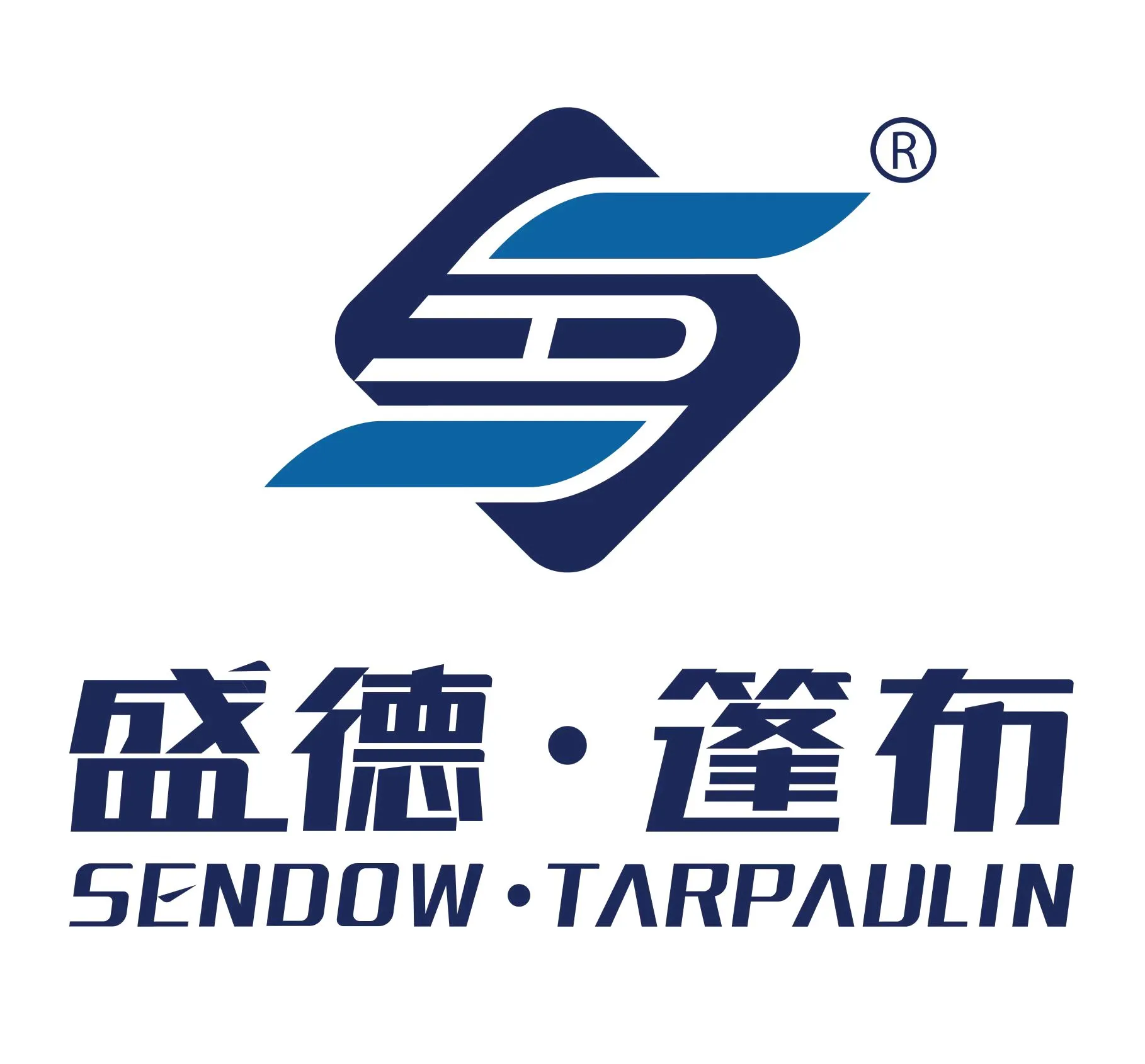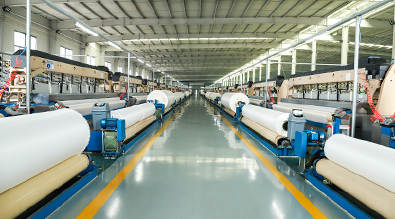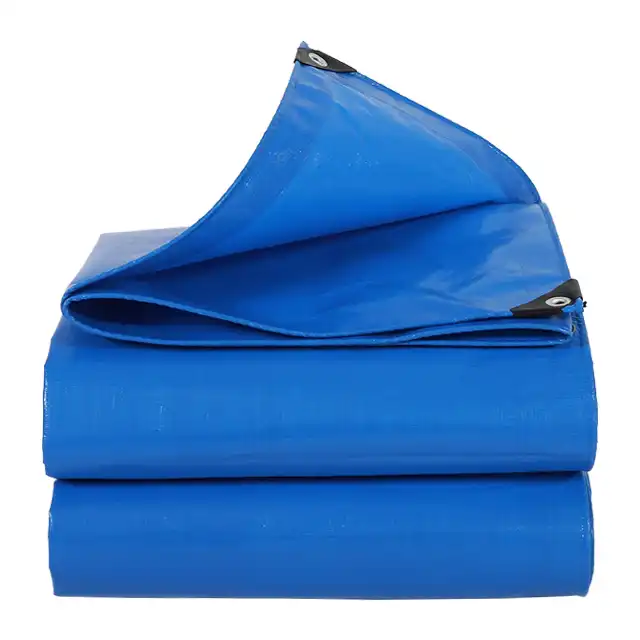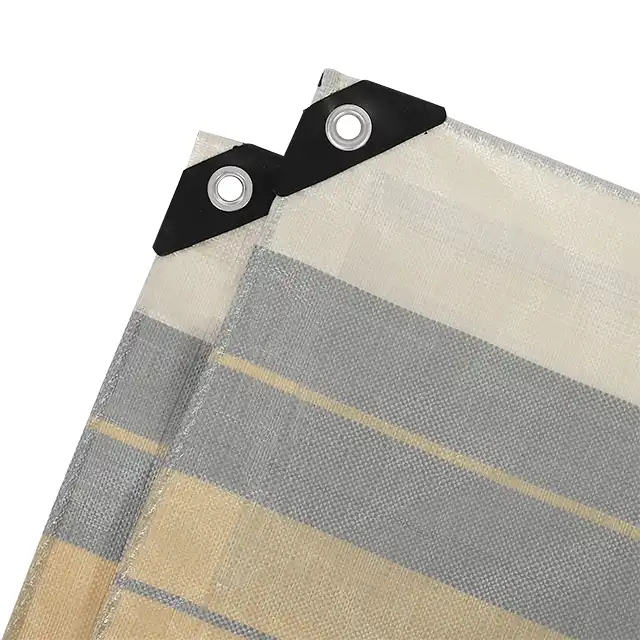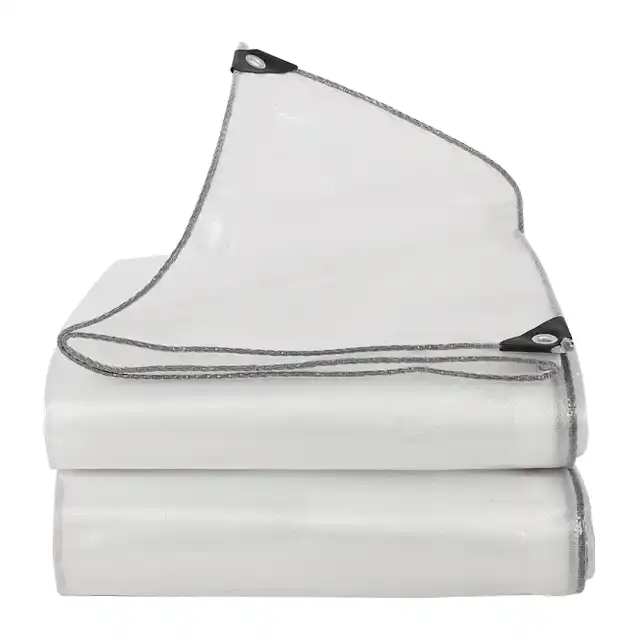How PE Woven Fabric is Used on Construction Sites?
Construction sites present numerous challenges, from protecting materials against harsh weather conditions to ensuring worker safety and maintaining project timelines. PE woven fabric, a versatile polyethylene material manufactured through a process of weaving high-density polyethylene fibers and coating them with low-density polyethylene, has become an indispensable solution across global construction projects. This durable, lightweight, and waterproof material offers exceptional protection against the elements while providing cost-effective solutions for various construction applications. In this comprehensive guide, we'll explore the diverse applications, benefits, and selection criteria for PE woven fabric on construction sites, demonstrating why it has become a trusted resource for construction professionals worldwide.
Essential Applications of PE Woven Fabric in Construction
Protection of Building Materials
 PE woven fabric plays a crucial role in protecting valuable building materials on construction sites. When materials such as lumber, cement, bricks, and metal components are exposed to rain, snow, or excessive sunlight, they can deteriorate rapidly, resulting in costly replacements and project delays. High-quality pe woven fabric, like those manufactured by Linyi Shengde Plastic Co., Ltd., offers exceptional protection with weights ranging from 65gsm to 280gsm and thickness between 7-12 mil. The tightly woven polyethylene fibers create a barrier that prevents moisture penetration while still allowing for adequate air circulation, preventing issues like mold growth and material warping. The UV treatment (ranging from 1%-7%) in these fabrics provides additional protection against harmful sun rays that could otherwise fade or damage construction materials. Construction managers particularly value the anti-corrosion and anti-freezing properties of pe woven fabric, which ensure that expensive materials remain in optimal condition regardless of seasonal weather changes. With the capability to custom-order specific sizes up to 5.1m in width, construction companies can ensure complete coverage of their valuable materials, minimizing waste and maximizing protection efficiency.
PE woven fabric plays a crucial role in protecting valuable building materials on construction sites. When materials such as lumber, cement, bricks, and metal components are exposed to rain, snow, or excessive sunlight, they can deteriorate rapidly, resulting in costly replacements and project delays. High-quality pe woven fabric, like those manufactured by Linyi Shengde Plastic Co., Ltd., offers exceptional protection with weights ranging from 65gsm to 280gsm and thickness between 7-12 mil. The tightly woven polyethylene fibers create a barrier that prevents moisture penetration while still allowing for adequate air circulation, preventing issues like mold growth and material warping. The UV treatment (ranging from 1%-7%) in these fabrics provides additional protection against harmful sun rays that could otherwise fade or damage construction materials. Construction managers particularly value the anti-corrosion and anti-freezing properties of pe woven fabric, which ensure that expensive materials remain in optimal condition regardless of seasonal weather changes. With the capability to custom-order specific sizes up to 5.1m in width, construction companies can ensure complete coverage of their valuable materials, minimizing waste and maximizing protection efficiency.
Temporary Structures and Enclosures
PE woven fabric serves as an excellent material for creating temporary structures and enclosures on construction sites. During renovation or new construction projects, contractors often need to establish temporary barriers, walkways, or protective enclosures to maintain site safety and functionality. The high-strength pe woven fabric manufactured with advanced technology provides the perfect solution for these applications. With mesh counts ranging from 10x10 to 14x14, these fabrics offer varying degrees of durability and protection based on specific project requirements. Construction teams appreciate the fabric's arctic flexibility, which allows it to maintain structural integrity even in extreme temperature conditions. When creating temporary site offices, storage areas, or worker rest areas, pe woven fabric provides the necessary weather protection while being significantly more cost-effective than building permanent structures. Sendow Tarpaulin's middle-duty pe woven fabric, weighing between 100gsm-180gsm, offers an ideal balance between durability and manageability for these temporary applications. Additionally, the fabric's tear-resistant properties ensure that these structures remain intact throughout the construction project duration, even when exposed to construction site hazards like sharp debris or high winds, thus maintaining a secure and protected environment for both workers and equipment.
Environmental Control and Safety Measures
PE woven fabric plays a significant role in environmental control and safety measures on construction sites. Construction activities often generate dust, debris, and potentially hazardous materials that must be contained to protect surrounding communities and comply with environmental regulations. Pe woven fabric serves as an effective barrier, preventing the spread of construction dust and debris beyond site boundaries. The 100% waterproof nature of Sendow's pe woven fabric ensures that runoff from construction activities doesn't contaminate surrounding areas or water sources. With customizable sizes upon request, construction managers can precisely cover areas requiring environmental protection without excess material or insufficient coverage. Additionally, pe woven fabric contributes significantly to site safety by creating visual barriers that mark hazardous areas and prevent unauthorized access. The highly visible color options available (any color according to customers' requests) make these fabrics ideal for safety applications, clearly delineating dangerous zones or creating pathways for worker movement. The shrink-proof quality of pe woven fabric ensures that these safety barriers maintain their dimensions and effectiveness throughout changing weather conditions, providing consistent protection throughout the project lifecycle. Furthermore, these fabrics can be easily repositioned as construction phases progress, offering flexible solutions for evolving site safety requirements without significant additional investment.
Technical Advantages of PE Woven Fabric in Construction
Weather Resistance Properties
PE woven fabric stands out in construction applications primarily due to its exceptional weather resistance properties. Construction projects are perpetually at the mercy of unpredictable weather conditions, making protection against these elements crucial for project success. The advanced manufacturing process employed by Linyi Shengde Plastic Co., Ltd. creates pe woven fabric with superior waterproof capabilities that effectively shield construction materials and work areas from rain, snow, and moisture. The fabric's waterproof rating is achieved through a specialized process where HDPE woven fabric is combined with LDPE coating on both sides, creating an impermeable barrier that prevents water penetration even during heavy downpours. This waterproof quality is particularly valuable for concrete curing processes, where maintaining optimal moisture levels is essential for achieving desired strength and durability. Beyond moisture protection, pe woven fabric offers outstanding UV resistance with treatment levels of 1%-7%, preventing sun damage that could otherwise compromise construction materials and temporary structures. This UV protection extends the lifespan of both the fabric itself and the materials it protects, reducing replacement costs and construction delays. Additionally, the fabric's arctic flexibility allows it to remain pliable and functional even in extreme temperature conditions, from scorching summer heat to freezing winter conditions. This versatility makes pe woven fabric an all-season solution for construction sites, providing consistent protection regardless of seasonal changes and eliminating the need for different protective materials throughout the year.
Durability and Strength Characteristics
The durability and strength characteristics of PE woven fabric make it exceptionally suitable for the demanding environment of construction sites. Construction sites are inherently rough environments with numerous hazards that can damage lesser materials, but pe woven fabric manufactured by industry leaders like Sendow Tarpaulin stands up to these challenges. The tear-resistant nature of these fabrics stems from the high-strength yarn used in their production, creating a robust material that withstands punctures and tears even when exposed to sharp construction debris or tools. With weight options ranging from light-duty 65gsm to heavy-duty 280gsm, construction managers can select the appropriate strength grade based on specific application requirements and expected stress factors. The reinforced edge design commonly found in quality pe woven fabric provides additional durability at the most vulnerable points, preventing fraying or tearing at the borders and extending the useful life of the material. Middle-duty pe woven fabric, weighing between 100gsm-180gsm, offers an optimal balance of strength and manageability for most construction applications, capable of withstanding moderate stress while remaining easy to handle and reposition as needed. The tear resistance of pe woven fabric is particularly valuable for applications where the material might be subjected to wind forces or mechanical stress, such as protective barriers or material covers on high-rise construction projects. Furthermore, the anti-corrosion properties ensure that the fabric remains functional even when exposed to construction chemicals, cement dust, or other potentially damaging substances, maintaining its protective capabilities throughout the project duration regardless of the challenging conditions typical at construction sites.
Cost-Effectiveness and Reusability
PE woven fabric offers significant cost-effectiveness and reusability advantages that make it an economically sound choice for construction projects. Initial investment in quality pe woven fabric from established manufacturers like Linyi Shengde Plastic Co., Ltd. delivers exceptional return on investment through multiple reuse cycles and prevention of costly material damage. Unlike single-use protective materials, pe woven fabric maintains its essential protective qualities through multiple applications and relocations on the construction site, effectively distributing its cost across numerous uses and reducing overall project expenses. The fabric's durability enables construction companies to maintain an inventory of pe woven fabric that can be deployed across multiple projects over extended periods, further enhancing cost efficiency. Additionally, the material's lightweight nature (ranging from 65gsm to 280gsm depending on specific requirements) reduces transportation and handling costs compared to heavier protective alternatives. When calculating the economic benefits of pe woven fabric, construction managers must consider not only the direct material cost but also the indirect savings from prevented material damage, reduced waste disposal fees, and decreased project delays associated with weather-related complications. The customizable dimensions available (with roll widths up to 5.1m and sheet sizes upon request) allow construction companies to order precisely what they need, minimizing waste and unnecessary expenditure. Furthermore, pe woven fabric's ability to protect high-value construction materials from weather damage prevents costly replacements and schedule disruptions that would otherwise significantly impact project budgets. The fabric's shrink-proof quality ensures dimensional stability throughout its lifespan, maintaining coverage effectiveness and eliminating the need for premature replacement due to material deformation, thus extending its useful life and enhancing overall cost-effectiveness in construction applications.
Implementation Strategies for PE Woven Fabric on Construction Sites
Selection Criteria for Appropriate PE Fabric Types
Selecting the appropriate PE woven fabric for construction applications requires careful consideration of multiple factors to ensure optimal performance and cost-efficiency. Construction managers must first evaluate the specific protection requirements of their project, considering factors such as expected weather conditions, duration of use, and the value of materials being protected. For heavy-duty applications where maximum protection is required, such as long-term outdoor storage of expensive materials, pe woven fabric with higher weights (180gsm-280gsm) and increased thickness (10-12 mil) offers superior durability and protection. Conversely, lighter applications might be adequately served by more economical options with weights of 65gsm-100gsm. The mesh count of pe woven fabric, ranging from 10x10 to 14x14 in products from Linyi Shengde Plastic Co., Ltd., directly impacts strength and water resistance, with higher mesh counts providing enhanced protection against fine dust and water penetration. Construction professionals should also consider the required UV protection level (available from 1%-7%) based on project location and sun exposure, with higher UV treatment percentages necessary for construction sites in regions with intense sunlight or projects spanning multiple seasons. Color selection, while sometimes overlooked, can serve important functional purposes beyond aesthetics – lighter colors reflect heat and are ideal for hot climates, while bright colors enhance visibility for safety applications. Additionally, specific features such as reinforced edges, brass grommets, or heat-sealed seams might be necessary depending on attachment methods and stress points in the planned application. The arctic flexibility feature becomes particularly important for projects in regions with extreme temperature fluctuations, ensuring the pe woven fabric remains pliable and functional regardless of weather conditions. By carefully evaluating these selection criteria against specific project requirements, construction professionals can identify the optimal pe woven fabric specification that delivers the necessary protection while maintaining cost-effectiveness.
Installation and Securing Techniques
Proper installation and securing techniques are essential for maximizing the effectiveness of PE woven fabric on construction sites. The appropriate method depends largely on the specific application, size of the area to be covered, and expected duration of use. For temporary horizontal covers protecting materials or equipment, the pe woven fabric should be secured with sufficient overlap between sheets (typically 12-24 inches) to prevent water intrusion at seams. When covering irregularly shaped items, construction workers should allow additional fabric to accommodate the contours while avoiding tight stretching that could stress the material and reduce its lifespan. For vertical applications like dust barriers or site enclosures, pe woven fabric should be secured at intervals not exceeding 24 inches to prevent billowing and maintain effective coverage even in windy conditions. The highly durable pe woven fabric manufactured by Sendow Tarpaulin can be secured using various attachment methods, including grommets, batten strips, adhesive tapes, or mechanical fasteners, with the choice depending on the substrate material and required holding strength. For long-term installations, particularly in areas subject to high winds, reinforced attachment points should be created by folding the fabric edge over a rope or cable before securing it to the supporting structure, distributing tension more evenly across the fabric. When joining multiple sheets of pe woven fabric to cover large areas, heat-sealing techniques create stronger, more waterproof seams compared to mechanical fastening methods, though they require specialized equipment. For rapid deployment and frequent repositioning, weighted edges or sandbags provide non-invasive securing options that prevent damage to the fabric while maintaining adequate tension. Construction teams should also implement regular inspection routines for pe woven fabric installations, checking for signs of stress, tears, or loosening attachments, particularly after extreme weather events, to ensure continued protection effectiveness and address potential issues before they lead to fabric failure or compromised protection.
Maintenance and Storage Best Practices
Implementing proper maintenance and storage best practices significantly extends the service life of PE woven fabric and maintains its protective qualities across multiple construction projects. Regular maintenance should include gentle cleaning to remove accumulated dirt, debris, and construction dust that could degrade the material over time. When cleaning pe woven fabric, construction teams should use mild soap solutions rather than harsh chemical cleaners that might damage the protective coating or compromise the fabric's waterproof qualities. After cleaning, the fabric should be thoroughly dried before folding to prevent mold growth and material degradation that could occur in damp storage conditions. Inspection forms a critical component of maintenance, with regular checks for tears, punctures, or stress points that might compromise the fabric's protective capabilities. Minor damage to pe woven fabric can often be repaired using specialized repair tapes or patches designed for polyethylene materials, extending useful life without requiring complete replacement. For storage between uses, pe woven fabric should be folded rather than crumpled, with folds aligned to minimize creasing at the same points repeatedly, which could eventually lead to material failure along crease lines. The exceptional durability of Sendow Tarpaulin's pe woven fabric allows for multiple reuse cycles when properly maintained, making it a cost-effective solution across numerous construction projects. Storage areas should be clean, dry, and protected from direct sunlight, which can degrade even UV-treated fabric over extended periods. Temperature-controlled storage is ideal but not always practical on construction sites; however, avoiding extreme temperature fluctuations helps maintain the material's arctic flexibility and overall integrity. Large sheets of pe woven fabric are best stored on cylindrical cores rather than folded when space permits, preventing sharp creases and maintaining the material's dimensional stability. Construction companies should implement a rotation system for pe woven fabric usage, ensuring older inventory is used first and preventing prolonged storage that might lead to material degradation even under optimal conditions. With proper maintenance and storage practices, quality pe woven fabric from established manufacturers like Linyi Shengde Plastic Co., Ltd. can provide reliable protection across multiple construction projects, maximizing return on investment and ensuring consistent performance.
Conclusion
PE woven fabric has proven itself as an indispensable material on construction sites, offering exceptional protection against environmental elements while providing cost-effective solutions for material preservation, temporary structures, and safety measures. Its combination of durability, weather resistance, and versatility makes it an optimal choice for construction professionals seeking reliable performance in challenging conditions.
At Linyi Shengde Plastic Co., Ltd., we've dedicated two decades to perfecting our PE woven fabric products, ensuring they meet the highest standards of quality and performance for construction applications worldwide. Our commitment to innovation, quality control, and customer satisfaction has established us as a leading enterprise in the PE tarpaulin field. Ready to enhance your construction site protection? Contact our expert team today at info@shengdetarp.com to discuss your specific requirements and discover how our premium PE woven fabric solutions can contribute to your project success.
References
1. Johnson, R. M., & Williams, P. T. (2023). Advanced Applications of Polyethylene Fabrics in Modern Construction. Journal of Construction Materials, 45(3), 278-293.
2. Zhang, L., & Chen, H. (2024). Comparative Analysis of Weather-Resistant Materials for Construction Site Protection. International Journal of Construction Management, 18(2), 156-172.
3. Thompson, S. A., & Garcia, M. (2023). Cost-Benefit Analysis of Protective Materials in Large-Scale Construction Projects. Construction Economics and Building, 23(1), 45-61.
4. Anderson, K. L., & Roberts, J. T. (2024). Environmental Impact Reduction Through Effective Material Protection Strategies. Sustainable Construction Materials, 12(4), 312-329.
5. Patel, N., & Suzuki, T. (2023). Technical Properties of High-Density Polyethylene Fabrics in Extreme Weather Conditions. Journal of Building Engineering, 56, 104-118.
6. Martinez, C., & Al-Samawi, H. (2024). Implementation Guidelines for Protective Fabrics on Construction Sites: A Comprehensive Review. Construction and Building Materials, 367, 230-246.
